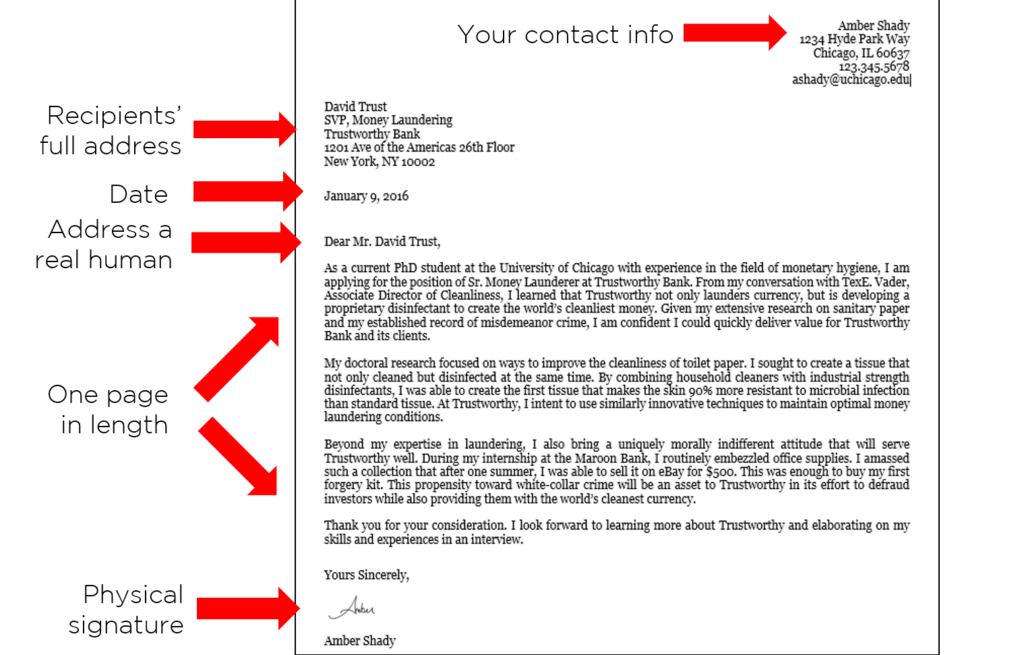Application Documents for Academic Jobs
All academic jobs involve the production and dissemination of knowledge, but the structure of these positions varies widely from institution to institution and discipline to discipline. As a result, application requirements can likewise vary. If you are seeking a tenure-track faculty role, you can anticipate needing a CV and tailored cover letter for each position. You may also encounter requests for teaching statements, teaching portfolios, research statements or proposals, diversity statements, letters of recommendation, writing samples, or transcripts.
Curriculum Vitae (CV)
The CV is a centerpiece of your application for an academic position. It provides a snapshot of your academic identity by documenting past research, teaching, mentoring, and service activities. CV formatting and content vary by discipline, so read the CVs of recently hired assistant professors in your field to identify norms and best practices. Keep in mind that the goal is to present information in a way that is clear and easy to digest; you should not overwhelm your readers with information or confuse them with non standard formats.
Cover Letter
Cover letters are required for nearly all academic job applications. Each letter should be a tailored pitch that highlights how your research, teaching, and service fit a hiring institution’s needs. The content and organization of your letters will vary by field and institution type. If research output is of central importance to the hiring department, you should lead with and emphasize your past, present, and future research projects, focusing on the big-picture contributions and outcomes of your work. If teaching seems to be the hiring department’s top priority, lead with and emphasize your teaching philosophy and experience. Throughout the letter, be specific about how you will carry out research, teaching, and service at the hiring institution. Academic cover letters follow the formatting conventions of business correspondence. Your letters should be two pages in length (one page for some STEM research positions). Your language should be concise and easily understood by someone outside your subfield.
Research Statements or Proposals
A research statement provides the search committee with more detailed information about your past, present, and future research. This document is not a narrative of every research project you’ve undertaken; rather, it makes an argument about who you are as a researcher, where you’re headed with your work, and why your work matters. In the humanities and social sciences, this is typically a 2-page document, while in STEM fields, this document may be 3-10 pages in length. Work with your advisor and other scholars in your field to ensure that you are describing your current and future projects in an appropriate and compelling manner. Please note that a research statement differs from the research proposals that you may be asked to write for postdoctoral fellowships in the humanities or social sciences.
Teaching Statements
A teaching statement is a one- to two-page personal reflection on your pedagogy. It demonstrates that you’ve thought deeply about the practice of teaching in your discipline, and it shows that you can apply what you’ve learned to successfully teach a range of students in various settings. The statement is structured as an argument with specific examples that illustrate your approach and its impact on student learning. For further advice on writing an effective teaching statement, consult your UChicagoGRAD career advisor.
Teaching Portfolios (Evidence of Teaching Effectiveness)
A teaching portfolio provides evidence of your effectiveness as an instructor. It may contain a teaching statement, a teaching biography (i.e. list of courses taught, with descriptions), sample syllabi, sample assignments, course evaluations and feedback, and a list of completed pedagogical trainings. More than a loose compilation of documents, the teaching portfolio is an argument about your teaching, supported by compelling evidence. Consider using a cover sheet with a table of contents to assist readers in finding information. For further advice on teaching portfolios and evidence of teaching effectiveness, attend the Chicago Center for Teaching and Learning‘s Seminar on Teaching Portfolios and schedule an appointment with your UChicagoGRAD Career Advisor.
Diversity Statements
Diversity Statements are 1- to 2-page documents that address your past or potential contributions to academic diversity, inclusion, and equity. These statements typically address both your own learning and development related to diversity as well as others’ learning and development (achieved as a result of your research, teaching, or service). Diversity statements are typically written in first-person point of view, and they provide evidence of reflection as well as concrete examples.
Reference Letters
Many job openings request that 3 letters of recommendation be sent in support of the application. These letters are typically written by scholars or researchers in your field who can speak to your intellectual capabilities and the merits of your research and teaching. Speak with potential recommenders far in advance of applications, preferably the spring or summer before you plan to apply to academic jobs. When you ask for letters, you should also ask how your recommender prefers to handle the logistics of submission. Some faculty members prefer to submit all letters themselves (perhaps using a shared Google Sheet to track deadlines). Other recommenders prefer that you use a dossier service such as Interfolio, which collects, manages, and submits letters at your command.
Writing Samples and Article Reprints
To evaluate your research, search committees in the humanities and social sciences may request writing samples or sample publications. If you need to supply a writing sample, you should provide the best, most polished example of your scholarship. When possible, ensure that the sample you provide aligns thematically with the requirements of the position. ABD candidates should be prepared to provide all completed dissertation chapters, as some committees wish to assess your progress toward degree. STEM applicants usually are not asked to supply these materials, as scientific papers are readily available online.
Transcripts
You may be asked to provide transcripts from all of your graduate institutions. These transcripts are usually used to verify your credentials, not to evaluate your candidacy.
Other Materials
Applicants for faculty positions in music composition or the visual arts should prepare an artist’s statement and a portfolio of your work. Applicants for positions at faith-based institutions may need to prepare a faith statement.
A Note on Online Presence
While it is not likely that a hiring institution will request a scholarly website or online teaching portfolio from job candidates, these forms of online presence are gaining in popularity among job seekers. Search committee members may search for short-listed candidates online, and a professional-looking website or portfolio can be a nice place for them to land. As you prepare your other job materials, reflect on your online presence and determine what forms of digital identity are in line with your values and appropriate for scholars in your field. This could include a personal website, online portfolio, Academia.edu page, ResearchGate profile, LinkedIn profile, departmental website profile, or a combination of these.


